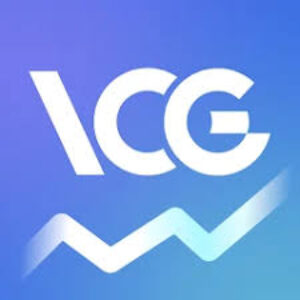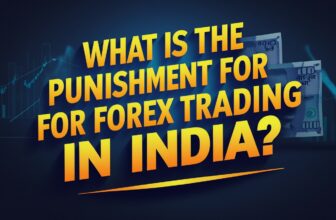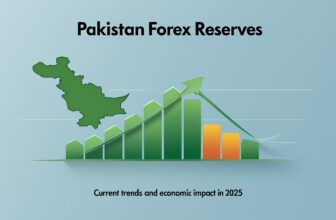
A margin call in forex signals a critical juncture. It’s a broker’s demand for additional funds when a trader’s account balance dips close to the minimum required margin. Understanding margin calls is pivotal to managing risks and preserving positions in currency trading.
A margin call in forex is a notification that a trader receives when their account’s margin level falls below a specific threshold. The margin level is the ratio of equity to used margin, and it determines the amount of available margin a trader has.
If the margin level falls below the margin call level, the trader may be required to deposit more funds into their account or close losing positions to free up more margin.
Key Takeaways
- Margin call in forex is a notification received when the margin level falls below a specific threshold.
- The margin level is the ratio of equity to used margin and determines the available margin.
- Traders may need to deposit more funds or close losing positions to meet the margin call.
- Understanding and managing margin calls is crucial for minimizing potential losses in forex trading.
- Effective risk management and maintaining a healthy margin level are key in avoiding margin calls.
What is Margin Call in Forex?
In forex trading, a margin call is a critical concept that demands the attention of every trader. Essentially, a margin call occurs when the equity on a trader’s account drops below the specified margin requirement. Equity, in this context, encompasses the initial capital deposited, plus or minus any profits or losses accrued during trading activities. This vital metric is easily accessible on trading platforms, such as the IG platform, where traders can monitor their financial standing.
Consider a scenario where a trader initiates a leveraged trade, committing a portion of their equity to the used margin. The used margin is the amount of capital reserved by the broker to facilitate the leveraged trade. If the market movements turn unfavorable and the floating losses exceed the usable margin, the equity falls below the margin requirement. This precarious situation triggers a margin call, prompting the broker to take action to restore the necessary margin.
In the forex market, the Margin Call Level assumes significance as a predetermined threshold. This level is essentially a specific percentage value of the Margin Level, acting as an alert mechanism for traders. For instance, if a broker sets a Margin Call Level at 100%, the trading platform notifies the trader when their Margin Level reaches or falls below this critical threshold. This notification serves as a warning that the account is in danger of facing forced closure of positions.
To illustrate, let’s consider a trader with a $1,000 account and an open position in EUR/USD with a required margin of $200. If the market moves unfavorably, resulting in a floating loss of $800, the equity now stands at $200. The Margin Level, calculated as (Equity / Used Margin) x 100%, reaches 100%. This triggers a margin call, preventing the trader from opening new positions and allowing only the closure of existing ones until the Margin Level improves.
It’s essential to comprehend that a margin call isn’t a mere formality; it has tangible consequences. When a margin call occurs, the broker may liquidate the trader’s positions to mitigate further losses. The trader not only faces the challenge of no longer having funds to support losing positions but also risks owing the broker more than their initial deposit due to the nature of leveraged trading.
To avoid falling into the margin call trap, traders must adopt responsible practices. This includes avoiding over-leverage, implementing prudent risk management strategies, and maintaining a healthy amount of free margin. By doing so, traders can navigate the forex market with a reduced risk of encountering the unwelcome scenario of a margin call. Understanding the intricacies of margin calls is a fundamental aspect of achieving long-term success in forex trading.
Distinguishing Margin Call Level and What Happens After a Margin Call in Forex
When getting into forex trading, understanding the fine line between Margin Call Level and the subsequent events that unfold after a margin call is crucial for traders aiming to navigate the market successfully.
Distinguishing Margin Call Level and Margin Call
Margin Call Level Defined: The Margin Call Level serves as a predefined threshold set by brokers. Think of it as an early warning system, a specific percentage value of the Margin Level. For instance, if a broker sets a Margin Call Level at 100%, the trading platform notifies the trader when their Margin Level reaches or falls below this critical threshold. This early alert acts as a preventive measure, giving traders an opportunity to take corrective actions before a full-blown margin call scenario unfolds.
Margin Call Event Explained: In contrast, a Margin Call is the subsequent event triggered when the Margin Level falls below the specified Margin Call Level. This event is akin to a red flag, indicating that the trader’s account is in a precarious position. Once a Margin Call is in effect, the trader faces restrictions on trading activities. For example, at a Margin Level of 100%, traders are prohibited from opening new positions, and the platform allows only the closure of existing ones until the Margin Level improves.
What Happens After a Margin Call?
Trading Restrictions: When a margin call is triggered, the trader experiences a series of restrictions. At a Margin Level of 100% or lower, new positions cannot be initiated. The focus shifts to managing existing positions and improving the Margin Level to regain trading privileges. This restriction is a protective mechanism to prevent further losses and to prompt the trader to take corrective actions.
Potential Outcomes: The trader’s ability to address a margin call determines the outcomes. If the market reverses favorably, or if additional funds are deposited to increase equity above the Margin Call Level, normal trading activities can resume. However, if neither of these actions occurs, and the Margin Level continues to fall, the broker may proceed with closing positions to mitigate potential losses, a process known as a “stop out.”
Stop Out Level: The Stop Out Level is another critical threshold that varies by broker. If the Margin Level falls further, the broker may be compelled to close positions, protecting both the trader and the broker from accumulating substantial losses. It’s analogous to being burned by boiling water; the Stop Out event is a protective measure, preventing the trader from reaching a point of no return.
Illustrative Example:
Consider a trader with a $1,000 account and an open position with a required margin of $200. If the market moves unfavorably, resulting in a floating loss of $800, the Equity is reduced to $200, and the Margin Level hits 100%. At this point, a Margin Call is triggered. If the trader does not address the situation by depositing additional funds or closing positions, and the Margin Level falls further, the broker may initiate a stop out, closing the position to prevent the account from falling into negative territory.
In essence, distinguishing between the Margin Call Level and the subsequent events after a margin call is vital for traders to navigate the challenges of the forex market effectively. Being aware of these intricacies empowers traders to make informed decisions and implement corrective measures in a timely fashion, safeguarding their trading capital and overall success in the dynamic world of forex.
How Does a Margin Call Work?
A margin call in forex works by monitoring the equity and used margin in a trader’s account. When the equity falls below the used margin, indicating a decrease in available margin, a margin call is triggered. There are several reasons why a margin call may occur in forex trading.
Possible Reasons for a Margin Call in Forex:
- Large losses on open positions
- Inadequate risk management
- Insufficient free margin in the account
- Increased margin requirements imposed by the broker
To avoid margin calls, traders should implement effective risk management strategies. This includes setting appropriate stop losses to limit potential losses on trades and ensuring that sufficient free margin is maintained in the account. By regularly monitoring margin levels and making necessary adjustments, traders can minimize the risk of receiving a margin call.
“Managing margin call risk is crucial in forex trading. Traders must stay vigilant and adapt their strategies to changing market conditions to avoid potential margin calls.”
It is important to note that margin call and stop out levels are closely related concepts in forex trading. While a margin call alerts traders to low available margin, a stop out level is the point at which a broker may forcibly close positions to prevent further losses. Traders should understand the difference between margin call and stop out levels to effectively manage their trading accounts and mitigate risks.
| Margin Call | Stop Out Level |
|---|---|
| Alerts traders to low available margin | Forcibly closes positions to prevent further losses |
| Requires action from the trader to restore sufficient margin | Automatic closure of positions by the broker |
| Higher threshold compared to stop out level | Lower threshold compared to margin call level |
Margin Call and Stop Out Level in Forex
In forex trading, the concept of margin call and stop out level plays a crucial role in managing risk and protecting both traders and brokers. While margin call notifies traders when their account’s margin level falls below a certain threshold, the stop out level acts as an additional safety net to prevent further losses. Understanding the difference between these two levels is essential for successful forex trading.
Margin Call and its Meaning
Margin call is a warning that traders receive when their margin level drops below a specified limit. It serves as an indication that the trader needs to take immediate action to avoid potential losses. When a margin call occurs, traders may be required to deposit additional funds into their account or close losing positions to free up more margin. By managing margin calls effectively, traders can maintain a healthy margin level and mitigate the risk of significant losses.
Stop Out Level and its Importance
The stop out level is set by brokers as an extra measure to protect both traders and themselves. It represents the minimum margin level at which a broker may forcibly close a trader’s positions to prevent further losses. When the margin level falls below the stop out level, the broker automatically starts closing the trader’s positions, beginning with the one that has the highest loss. This helps to limit potential losses and ensures that the trader’s account does not go into a negative balance.
It is crucial for traders to understand the implications of both margin call and stop out level in forex trading. By closely monitoring their margin levels and ensuring they have sufficient free margin, traders can avoid margin calls and the subsequent stop out. Implementing effective risk management strategies and setting appropriate stop losses are also paramount in avoiding unwanted margin calls and protecting one’s trading capital.
| Margin Call | Stop Out Level |
|---|---|
| Notification when margin level falls below a specific threshold | Minimum margin level at which broker forcibly closes positions |
| Traders may need to deposit more funds or close losing positions | Protects both traders and brokers from further losses |
| Helps manage risk and avoid significant losses | Prevents accounts from going into a negative balance |
Understanding the dynamics of margin call and stop out level is vital for traders to navigate the forex market successfully. By employing effective risk management techniques and being proactive in monitoring margin levels, traders can optimize their trading strategies and protect their investments.
Conclusion
Understanding the importance of margin call in forex is crucial for traders looking to manage their risk effectively. By implementing a forex margin call strategy and calculating margin calls accurately, traders can navigate the volatile forex market with confidence.
One key aspect of managing margin calls is to maintain a disciplined approach to trading. Traders should set appropriate stop losses and regularly monitor their margin levels to ensure they have sufficient free margin in their account. This helps to avoid the risk of receiving a margin call and potentially facing significant losses.
Additionally, developing a margin call strategy is essential. Traders need to consider factors such as their risk tolerance, trading style, and financial goals when creating a strategy that aligns with their individual needs. This includes determining the maximum allowable margin level before taking action to prevent receiving a margin call.
In summary, a thorough understanding of forex margin call calculation, implementing a margin call strategy, and recognizing the significance of margin calls in managing risk are essential for successful forex trading. By employing these strategies, traders can protect their accounts, minimize potential losses, and trade the forex market with confidence.
FAQ
What is a margin call in forex?
A margin call in forex is a notification that a trader receives when their account’s margin level falls below a specific threshold. It indicates that the trader may be required to deposit more funds into their account or close losing positions to free up more margin.
How does a margin call work?
A margin call works by monitoring the equity and used margin in a trader’s account. When the equity falls below the used margin, a margin call is triggered. This can happen due to losses on open positions or increased margin requirements.
What is the difference between a margin call and stop out level?
A margin call is a threshold at which a trader is required to take certain actions to prevent further losses, such as depositing more funds or closing losing positions. The stop out level is a level at which a broker may forcibly close a trader’s positions to prevent further losses.
How can traders avoid margin calls?
Traders can avoid margin calls by managing their risk effectively, setting appropriate stop losses, using proper risk management techniques, and ensuring they have sufficient free margin in their account.
















